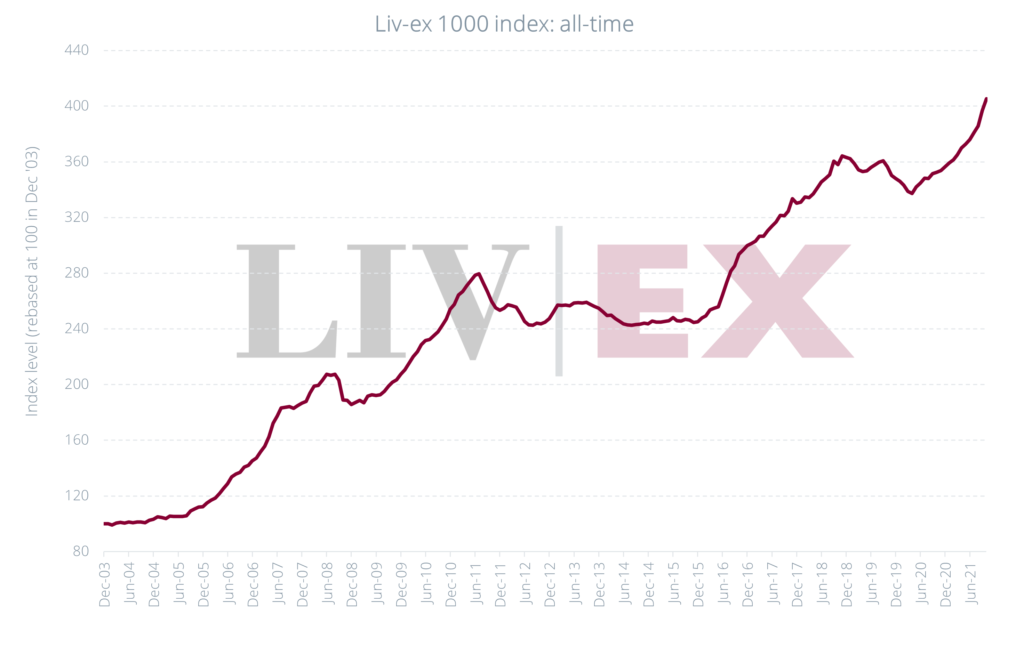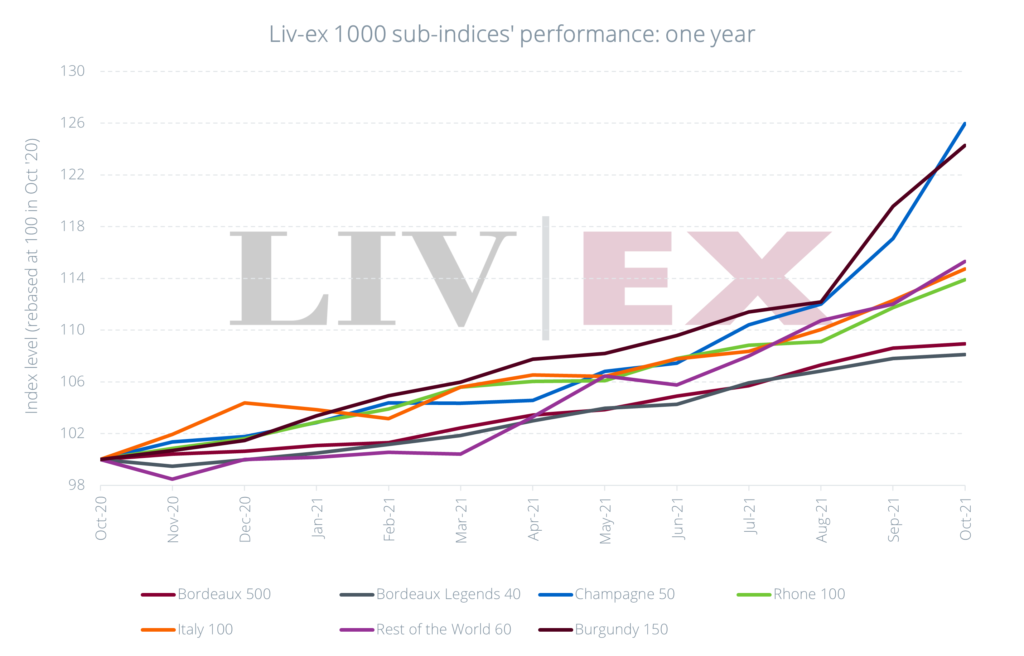The broadest measure of the market, the Liv-ex Fine Wine 1000 index, set another record in October, fuelled by Champagne and Burgundy’s price performance.
- The broadest measure of the market, the Liv-ex 1000 index, rose 2.1% in October.
- Prices for Champagne increased the most, up 7.6% last month.
- Bordeaux was the slowest riser across all regions.
Fine wine’s relentless rise continues
The broadest measure of the market, the Liv-ex Fine Wine 1000 index, reached another all-time high in October, closing at 405.4, up 2.1% on the previous month. The index has risen consistently over the past 11 months.
The Liv-ex 100 index also set a brand new record last month during its most bullish period to date.
Champagne leads price performance
The Champagne 50 was the best performing Liv-ex 1000 sub-index in October, rising 7.6%. The recent release of Krug 2008 triggered secondary market activity across various Champagne houses. Demand stimulated prices and Krug 2008 last traded 29.8% above its release price.
Thanks to its impressive performance in October, the Champagne 50 index has become the best-performing regional sub-index so far in 2021 and over a one-year period.
The Burgundy 150 index, which went up 3.9% last month, follows close behind. Burgundy prices are soaring once again as a result of increased scarcity – a combination of low-yielding vintages and tight allocations.
Once again, the Bordeaux Legends 40 and the Bordeaux 500 indices were the slowest movers. But even Bordeaux prices are rising by 0.3%.
About Liv-ex Indices
The Liv-ex Fine Wine 1000 Index is the market’s broadest measure. It represents the price movement of 1,000 wines from across the world. The index comprises seven sub-indices: the Bordeaux 500, the Bordeaux Legends 40, the Burgundy 150, the Champagne 50, the Rhone 100, the Italy 100 and the Rest of the World 60.
The index is calculated using the Liv-ex Mid Price, which refers to the mid-point between the highest live bid and lowest live offer on the market. The prices are validated against additional data including transaction prices and are the most robust measure for pricing wines available in the market.
The reason for this is because other sources of fine wine price information and indices base their calculations on list prices. These are advertised prices, often collected from sellers who may be advertising wine that they don’t even have in stock. There is no firm commitment to buy or sell at an advertised price. The real value of the wine may be higher or lower than listed.
Liv-ex can uniquely provide prices from real transactions among the wine trade. These are historic trade prices, as well as firm commitments to buy or sell on the market at a given price. All transactions are standardised by condition and tax status, allowing you to make like-for-like comparisons. Our members value this because it is real, proven price information.
Not a member of Liv-ex? Request a demo to see the exchange and a member of our team will be in touch with you shortly.






